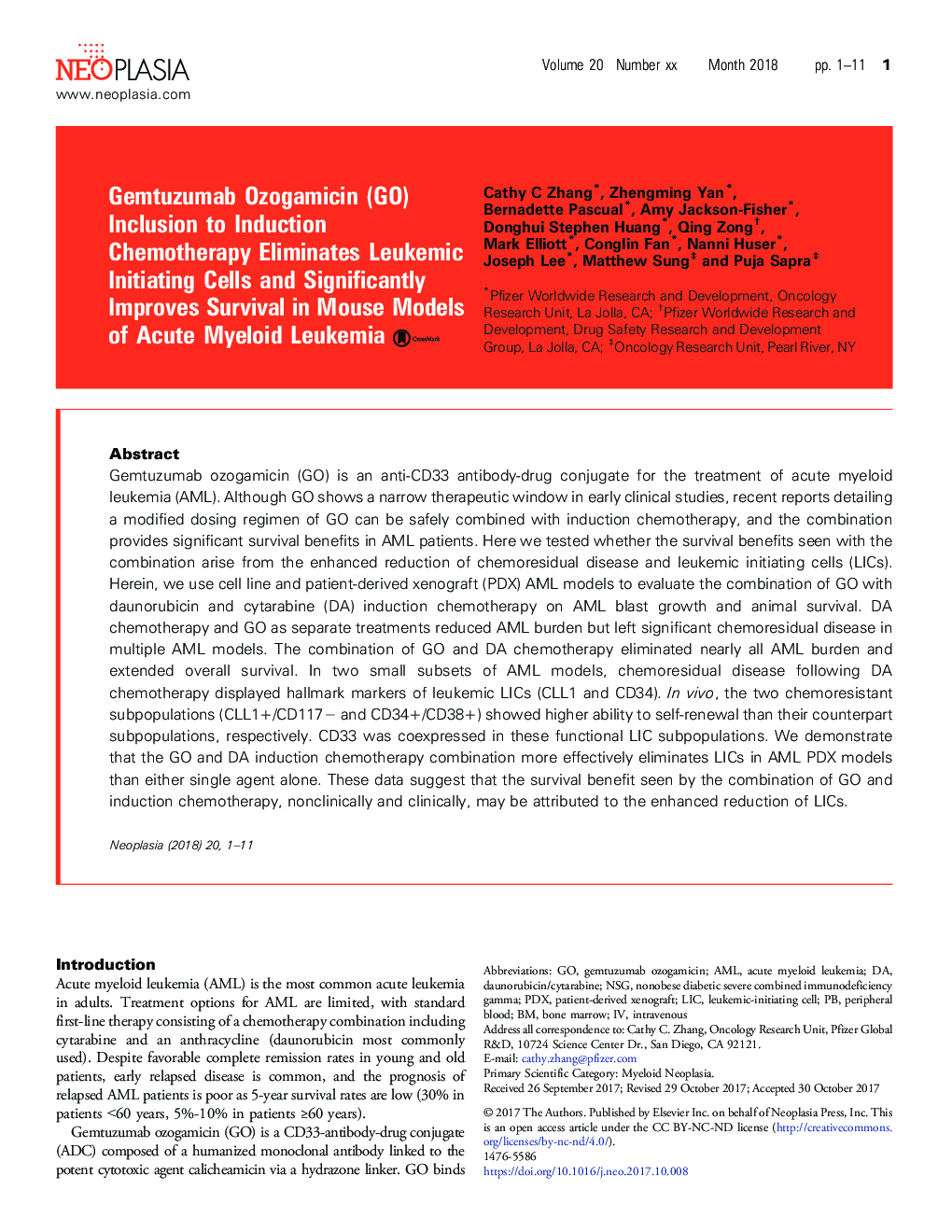| Article ID | Journal | Published Year | Pages | File Type |
|---|---|---|---|---|
| 8456852 | Neoplasia | 2018 | 11 Pages |
Abstract
Gemtuzumab ozogamicin (GO) is an anti-CD33 antibody-drug conjugate for the treatment of acute myeloid leukemia (AML). Although GO shows a narrow therapeutic window in early clinical studies, recent reports detailing a modified dosing regimen of GO can be safely combined with induction chemotherapy, and the combination provides significant survival benefits in AML patients. Here we tested whether the survival benefits seen with the combination arise from the enhanced reduction of chemoresidual disease and leukemic initiating cells (LICs). Herein, we use cell line and patient-derived xenograft (PDX) AML models to evaluate the combination of GO with daunorubicin and cytarabine (DA) induction chemotherapy on AML blast growth and animal survival. DA chemotherapy and GO as separate treatments reduced AML burden but left significant chemoresidual disease in multiple AML models. The combination of GO and DA chemotherapy eliminated nearly all AML burden and extended overall survival. In two small subsets of AML models, chemoresidual disease following DA chemotherapy displayed hallmark markers of leukemic LICs (CLL1 and CD34). In vivo, the two chemoresistant subpopulations (CLL1+/CD117â and CD34+/CD38+) showed higher ability to self-renewal than their counterpart subpopulations, respectively. CD33 was coexpressed in these functional LIC subpopulations. We demonstrate that the GO and DA induction chemotherapy combination more effectively eliminates LICs in AML PDX models than either single agent alone. These data suggest that the survival benefit seen by the combination of GO and induction chemotherapy, nonclinically and clinically, may be attributed to the enhanced reduction of LICs.
Keywords
Related Topics
Life Sciences
Biochemistry, Genetics and Molecular Biology
Cancer Research
Authors
Cathy C Zhang, Zhengming Yan, Bernadette Pascual, Amy Jackson-Fisher, Donghui Stephen Huang, Qing Zong, Mark Elliott, Conglin Fan, Nanni Huser, Joseph Lee, Matthew Sung, Puja Sapra,
